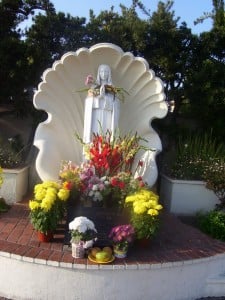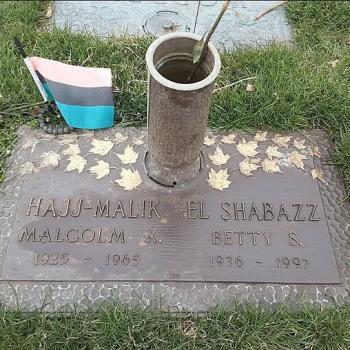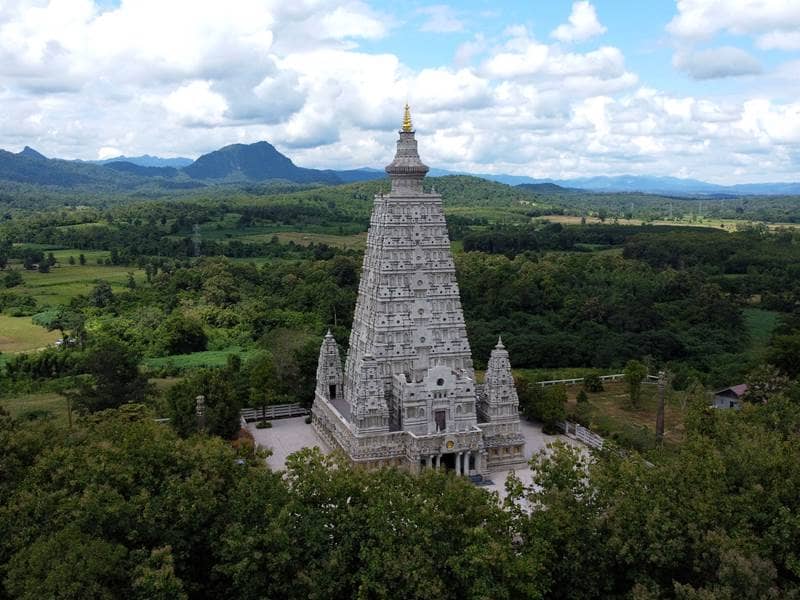
- Trending:
- Pope Leo Xiv
- |
- Resurrection
- |
- Trump
- |
- Social Justice
- |
- Peace
- |
- Pope Francis
The 100 Most Holy Places On Earth
Mahabodhi Temple

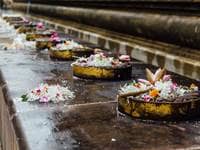
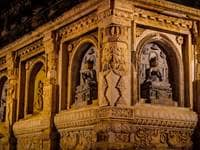
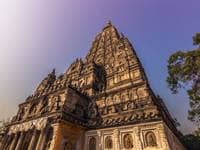
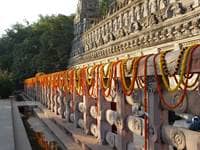
Also Known As:
Bodh Gaya
Bodhgaya
Mahabodhi Temple Complex
Associated Faiths:
Buddhism
To a lesser extent, Hindusim
Accessibility:
Open to visitors. Shoulders should be covered, and long pants should be worn.
Annual visitors: 4,000,000
History
Bodh Gaya is the site of the 12-acre Mahabodhi Temple Complex. It is also the location at which tradition claims (some 2,500 hundred years ago) Sidhartha Gautama—the Buddha—achieved enlightenment, while sitting under a bodhi tree. While the tree located on the site today is not the original tree under which Buddhists believe Sidhartha sat, it is claimed to be a “descendant” of that original tree. Legend has it that the wife of Ashoka, India’s first Buddhist ruler, destroyed the original tree because she was upset at the amount of time her husband spent at the tree (out of his devotion to the Buddha).
As the first Buddhist emperor, Ashoka built the initial temple erected on this site. It was constructed in the 3rd century BCE. However, the current Mahabodhi Temple is of much later origin. It dates to somewhere around the 5th century CE, possibly earlier. It is one of the oldest brick Buddhist temples still standing anywhere in the world.
This site has long been considered sacred by both Hindus and Buddhists. However, for more than two millennia, the site was under the control of Hindus. Indeed, when one visits the site today, one finds prominently displayed in front of the tree what has been described as “a small altar, bearing images of Hindu gods.” Thus, no less than seven Hindu figures are depicted in stone in front of the tree. However, because the Buddha is more central to the Buddhist tradition than the Hindu tradition, in 1891 the “Mahabodhi Society” was founded in an effort to regain Buddhist control of the site.
Emperor Ashoka is said to have erected a pillar near the tree (in the third century BCE)—a sort of memorial to the significance of the site. In the centuries to follow, a wall was constructed around that pillar and, from there, a small temple was erected within the enclosure. That temple was expanded, taking its current form in the second century CE. However, sometime after the eleventh century, it was neglected and began to deteriorate. Thus, in 1882, Burmese Buddhists rebuilt the temple in the form that it stands currently.
Religious Significance
Because Sidhartha is traditionally seen as the “founder” of Buddhism, Bodh Gaya has been called “the most sacred Buddhist shrine” in the entire world. However, because Hinduism teaches that Sidhartha Gautama was the 9th avatar or incarnation of Vishnu, Bodh Gaya is also a sacred site in Hinduism—often called the “second holiest city after Varanasi.” Devotees of both Hinduism and Buddhism regularly make pilgrimages to this location.
This site is particularly holy because of the events which are traditionally believed to have transpired there. For Buddhist, the lost understanding of how to achieve enlightenment, the forgotten path to Nirvana, were rediscovered on this very spot in the 6th century BCE. As a consequence, many would hold that there can be no more hallowed location on the face of the planet. The very purpose of mortality, according to Buddhist thinking, was revealed at the site of the bodhi tree in Bodh Gaya. Consequently, all subsequent experiences of enlightenment tie back to this very spot and the events which took place there more than 2,500 years ago.
For many practitioners of Buddhism, Bodh Gaya’s ancient bodhi tree and associated Mahabodhi Temple (or “Great Awakening Temple”) are the exact center of the world and the very place at which all true Buddhas attain their enlightenment or awakening. Thus, for those earnestly seeking Samadhi and release from the cycle of rebirths, a pilgrimage to Bodh Gaya seems almost requisite. It is for this very reason that, approximately 300 years after the Buddha’s enlightenment, Emperor Ashoka made his own pilgrimage to the site.
There are numerous components to the Complex which draw tourists and seekers of enlightenment, including the various votive stupas, three monasteries, the lotus pond, and the on-site museum (which contains to ancient relics associated with the site). However, the most important things pilgrims come to see at the Temple Complex are the 164-foot tall Mahabodhi Temple itself, the Vajrasana (or throne of enlightenment, marking the spot where the Buddha sat when he achieved enlightenment), and the bodhi tree—a direct descendant of the original tree he is said to have sat under while seeking “bodhi” (or a spiritually awakened state). For practicing Buddhists, these are spiritually provocative sites which flood the practitioner with emotions and spiritual motivation.
Certainly, for those of Buddhist and Hindu traditions, and for those who are inquisitive in other traditions, visiting Bodh Gaya and its Mahabodhi Temple complex is a powerful and impactful experience. However, whether one is a Buddhist, Hindu, or practitioner of one of the non-Dharmic religions, if you know anything about the life and teachings of the Buddha, a trip to Bodh Gaya can be an impactful experience. Visiting the site where one of the most spiritually enlightened humans ever to exist once walked the earth can provoke both introspection and a sense of awe. Thus, it is a “sacred site” for any openminded and contemplative soul.



